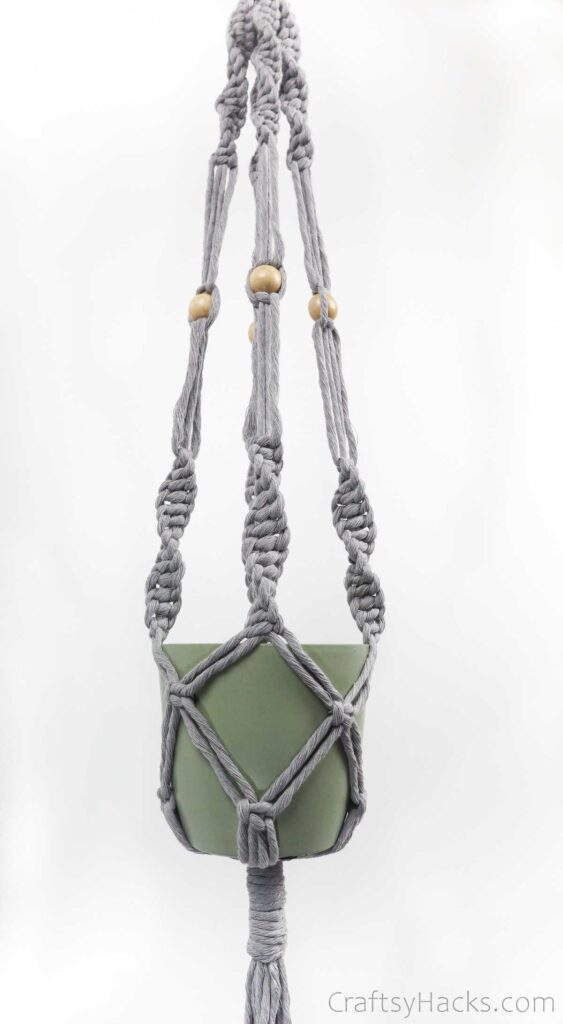Creating your own DIY Macrame Plant Hanger is more than just a fun project — it’s a way to bring life, texture, and personality into your living space. This timeless craft has resurfaced in modern home décor trends, offering both visual charm and practical use. From beginners to seasoned makers, macrame projects offer a therapeutic experience that results in beautiful, handcrafted pieces.
In this guide, you’ll learn how to start your journey with a DIY Macrame Plant Hanger using basic knots, affordable materials, and a touch of creativity. Whether you’re looking to elevate your interior design or craft thoughtful handmade gifts, macrame plant hangers are a rewarding and accessible project. The process doesn’t require a lot of tools — just patience, a few supplies, and a little bit of inspiration.
Not only is a DIY Macrame Plant Hanger environmentally friendly and budget-conscious, it also allows you to express your individual style. You can customize the hanger to suit any pot size, plant type, or room aesthetic. If you’ve been craving a hands-on project that adds something unique to your space, macrame might just be the ideal hobby for you.

Choosing the Right Materials for Your Macrame Plant Hanger
Before you begin your DIY Macrame Plant Hanger, it’s essential to select the right materials. The type of cord you choose will determine the texture, strength, and overall look of your hanger. Cotton cords are the most commonly used for beginners because they’re soft, durable, and easy to knot.
You’ll also need a ring — typically wooden or metal — that acts as the base of the hanger. This helps distribute the weight of the plant and gives your project a strong anchor point. Be sure to choose a ring that can support the weight of the potted plant you plan to use.
Scissors and a measuring tape are two other essentials. Measuring your cords accurately is crucial for consistency and symmetry in your knots. A good rule of thumb is to use cords that are four to six times the desired finished length of your plant hanger.
Color also plays a role. While natural beige or white cords are traditional, colored cords can bring personality and vibrancy to your design. Choose tones that complement your interior décor for a seamless aesthetic.
You may want to consider using beads, rings, or other embellishments. These small details can elevate the final look of your DIY Macrame Plant Hanger, giving it a more intricate and professional finish.
Lastly, think about your plant and pot. A lightweight plastic pot will require less support than a heavy ceramic one, and hanging plants like pothos or ivy look especially graceful in a macrame design.
Mastering the Basic Macrame Knots
The beauty of a DIY Macrame Plant Hanger lies in its intricate patterns created through simple knots. Once you understand a few basic macrame knots, the creative possibilities are endless. Start with the Lark’s Head Knot — it’s used to attach cords to the anchor ring and is the foundation of most hangers.
Next, practice the Square Knot. This knot is fundamental in macrame and forms neat, decorative patterns. You can alternate square knots or stack them for visual interest. The Half Knot, which creates a spiral effect, is another common technique used in plant hangers.
The Gathering Knot is typically used at the bottom of your plant hanger to bind all the cords together beneath the pot. This knot adds both function and flair, helping to hold the planter securely in place.
Tension is everything when tying knots. Keep your work consistent in tightness and spacing to ensure a polished finish. Uneven tension can make your design look messy or unstable.
It’s perfectly fine to make mistakes — part of learning macrame is untying and trying again. Over time, your muscle memory will build, and you’ll find yourself creating patterns with ease and confidence.
Using a practice board or hanging your project on a door hook can help maintain proper cord orientation and tension. This makes knotting easier and helps you visualize the overall design as it comes together.
Design Ideas to Customize Your Macrame Plant Hanger
One of the most enjoyable aspects of making a DIY Macrame Plant Hanger is the ability to personalize it. You can adjust the number of cords and knots to create a sleek minimalist look or an elaborate boho statement piece.
Adding colored cords, dyed patterns, or ombre gradients allows your project to pop with style. You can also create symmetrical patterns with beads woven into the knots for added dimension and charm.
If you’re looking for a rustic or natural style, incorporating driftwood or bamboo rings instead of metal can give your macrame hanger an organic feel. These elements complement both farmhouse and nature-inspired interiors.
Don’t limit yourself to vertical designs. You can create multi-tiered macrame hangers that hold more than one pot, or circular designs that cradle wide bowls or baskets.
For outdoor use, be sure to choose weather-resistant cords. Polyester or nylon cords hold up well on patios or balconies and can endure sunlight and rain longer than cotton.
The best part? You’re not restricted to traditional plant pots. Try repurposing vintage bowls, mason jars, or woven baskets as holders to create a one-of-a-kind design that reflects your taste.
Tips for Hanging and Caring for Your Macrame Creation
Once your DIY Macrame Plant Hanger is complete, finding the right spot to hang it is just as important as making it. Choose a location with adequate natural light for your plant and secure it to a ceiling hook or wall bracket that can support its weight.
Avoid hanging the plant too high or too low — aim for a comfortable viewing level where you can easily water and care for it. If placing it near a window, ensure the plant’s light requirements are met.
Remember to check the moisture level of your plant regularly. Since macrame hangers don’t include drainage systems, overwatering can become an issue. Use pots with drainage holes and trays if possible.
Dust and lint can collect on cotton cords over time. Gently shake out or brush your macrame to keep it looking fresh. For stubborn dirt, a soft cloth with water should do the trick.
Rotate your plant hanger occasionally so that all sides of the plant receive light evenly. This promotes balanced growth and prevents one-sided leaning or wilting.
Lastly, if your plant grows too large for the hanger, simply re-use the macrame hanger for a smaller plant and create a new one. That’s the beauty of DIY Macrame Plant Hanger projects — they’re reusable and adaptable.
DIY Macrame Plant Hanger
What type of cord is best for a macrame plant hanger?
The most recommended cord for beginners is 3–5 mm cotton rope. It’s soft, easy to knot, and holds its shape well.
Can I make a macrame plant hanger without a ring?
Yes, while rings provide stability, you can tie cords directly to a dowel, branch, or hook. Just make sure the anchor is strong.
How long should my cords be?
Typically, cords should be four to six times the finished length of your hanger. Longer cords give more flexibility for complex patterns.
Do I need to be experienced to make a macrame plant hanger?
Not at all! Beginners can create simple and beautiful designs with just a few basic knots. Practice makes perfect.
How do I clean my macrame hanger?
Shake it out occasionally and spot clean with a damp cloth. Avoid machine washing unless the rope is specifically labeled machine-safe.
What plants are best for hanging in macrame?
Trailing plants like pothos, ivy, spider plants, and ferns look stunning in hanging planters due to their cascading nature.
By now, you’ve learned all the essential steps to create your very own DIY Macrame Plant Hanger — from selecting the right materials and mastering the knots to customizing the design and properly caring for your finished piece. This craft not only beautifies your home but also provides a relaxing, creative outlet that connects you with handmade traditions.
We’d love to hear your thoughts! If you enjoyed this tutorial or have suggestions for future projects, feel free to share your opinion. Your feedback helps us grow and keeps the creativity blooming in this wonderful macrame community.
